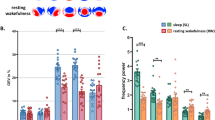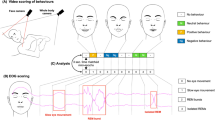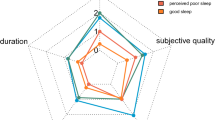Abstract
OBSERVERS of human behaviour have long commented on the similarities between the hallucinations of madness and the normal, universal hallucinations of dreaming1. Some have postulated that the two kinds of hallucinations share a common mechanism and that a derangement of this mechanism occurs in psychosis. If this were so, one might expect derangement of the mechanism to be present in sleep as well as waking, with a resultant alteration of the amount of dreaming; unfortunately, present theories (whether physiological2 or psychological3) do not explicitly predict the direction of such changes. However, the discoveries of Aserinsky, Dement and Kleitman now permit an empirical approach to this problem. These investigators have demonstrated that in both normal and schizophrenic subjects the low-voltage fast electroencephalogram (EEG) pattern of sleep accompanied by rapid eye movements (REM) is highly correlated with the subjective experience commonly described as dreaming4. The present study represents an application of their methods to the estimation of dream time in hallucinating and non-hallucinating schizophrenic subjects.
This is a preview of subscription content, access via your institution
Access options
Subscribe to this journal
Receive 51 print issues and online access
$199.00 per year
only $3.90 per issue
Buy this article
- Purchase on Springer Link
- Instant access to full article PDF
Prices may be subject to local taxes which are calculated during checkout
Similar content being viewed by others
References
Aristotle, in The Basic Works of Aristotle, edit. by McKeon, R., 619 (Random House, New York, 1941). Also see literature reviewed by Freud, S., The Interpretation of Dreams, trans. Strachey, J., 88 (Allen and Unwin, London, 1954), and by Evarts, E. V., in Hallucinations, edit. by West, L. J., 1 (Grune and Stratton, New York, 1962).
Theories of the type advanced by Jackson, J. H., in Selected Writings of Hughlings Jackson, edit. by Taylor, J., Holmes, G., and Walshe, F. M. R., 2, 25 (Basic Books, New York, 1958), and recently reformulated in light of the findings of modern neurophysiology by Evarts, E. V., op. cit, 4.
Freud, S., Collected Papers, trans. Riviere, J., 4, 137 (Hogarth Press, London, 1953).
Aserinsky, E., and Kleitman, N., Fed. Proc., 12, 6 (1953); Science, 118, 273 (1953); J. App. Physiol., 8, 1 (1955). Dement, W., J. Nerv. Ment. Dis., 122, 263 (1955). Dement, W., and Kleitman, N., EEG Clin. Neurophysiol., 9, 673 (1957).
Dement, W., paper presented at the annual meeting, Assoc. Psychophysiol. Study of Sleep, Chicago (March 1962).
Dement, W., and Kleitman, N., op. cit, 675.
Loomis, A. L., Harvey, E. N., and Hobart, G. A., J. Exp. Psychol., 21, 127 (1937).
Siegel, S., Nonparametric Statistics for the Behavioral Sciences, 116 (McGraw-Hill Book Co., Inc., New York, 1956).
Feinberg, I., Koresko, R. L., Gottlieb, F., and Wender, P. H., paper presented at the annual meeting, Amer. Psychiat. Assoc., St. Louis (May 1963); Comprehen. Psychiat. (in the press).
Author information
Authors and Affiliations
Rights and permissions
About this article
Cite this article
KORESKO, R., SNYDER, F. & FEINBERG, I. ‘Dream Time’ in Hallucinating and Non-hallucinating Schizophrenic Patients. Nature 199, 1118–1119 (1963). https://doi.org/10.1038/1991118a0
Issue Date:
DOI: https://doi.org/10.1038/1991118a0
This article is cited by
-
Methoden, Ergebnisse und Probleme der modernen experimentellen Traumforschung
Psychologische Forschung (1965)
Comments
By submitting a comment you agree to abide by our Terms and Community Guidelines. If you find something abusive or that does not comply with our terms or guidelines please flag it as inappropriate.



